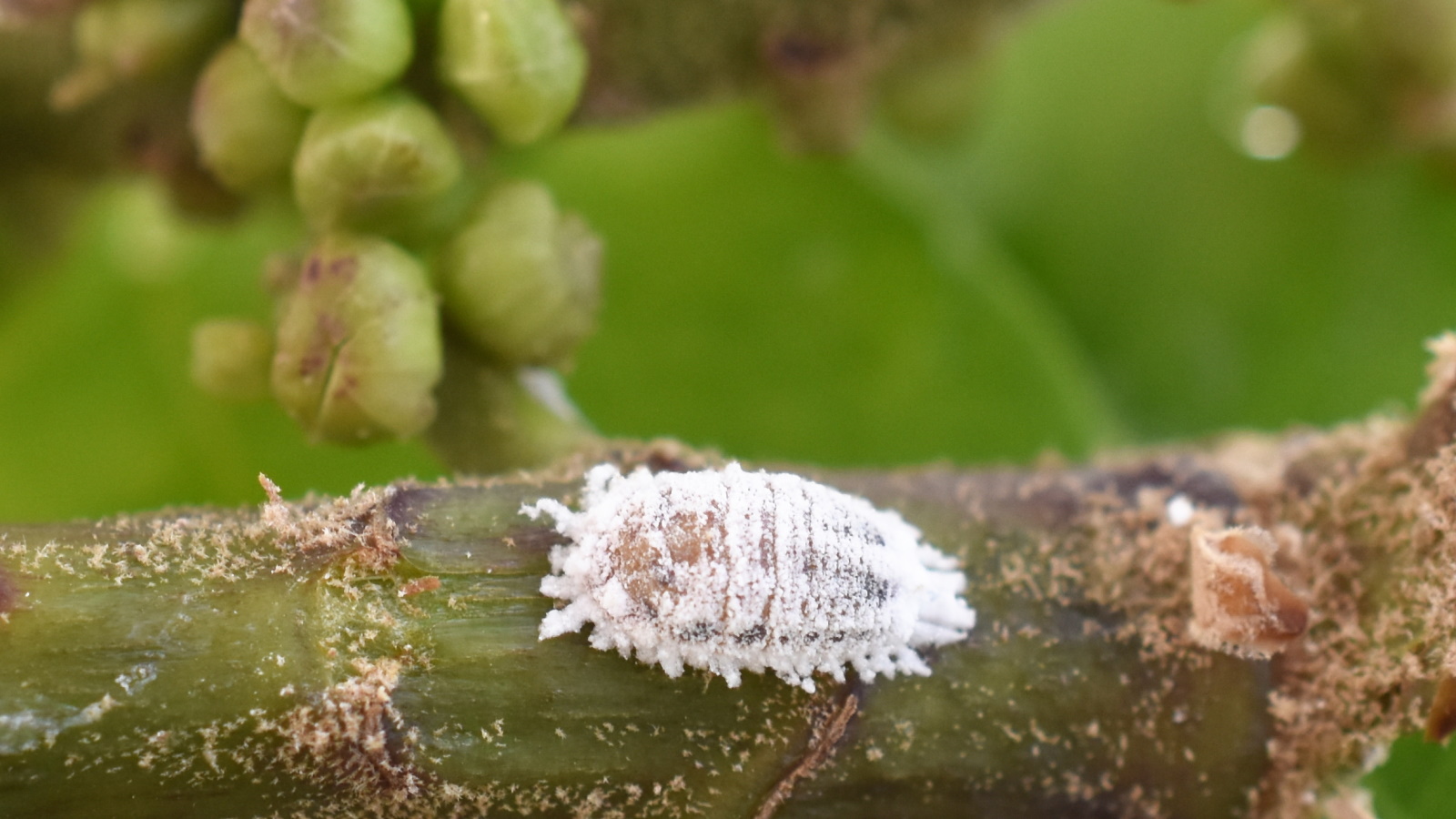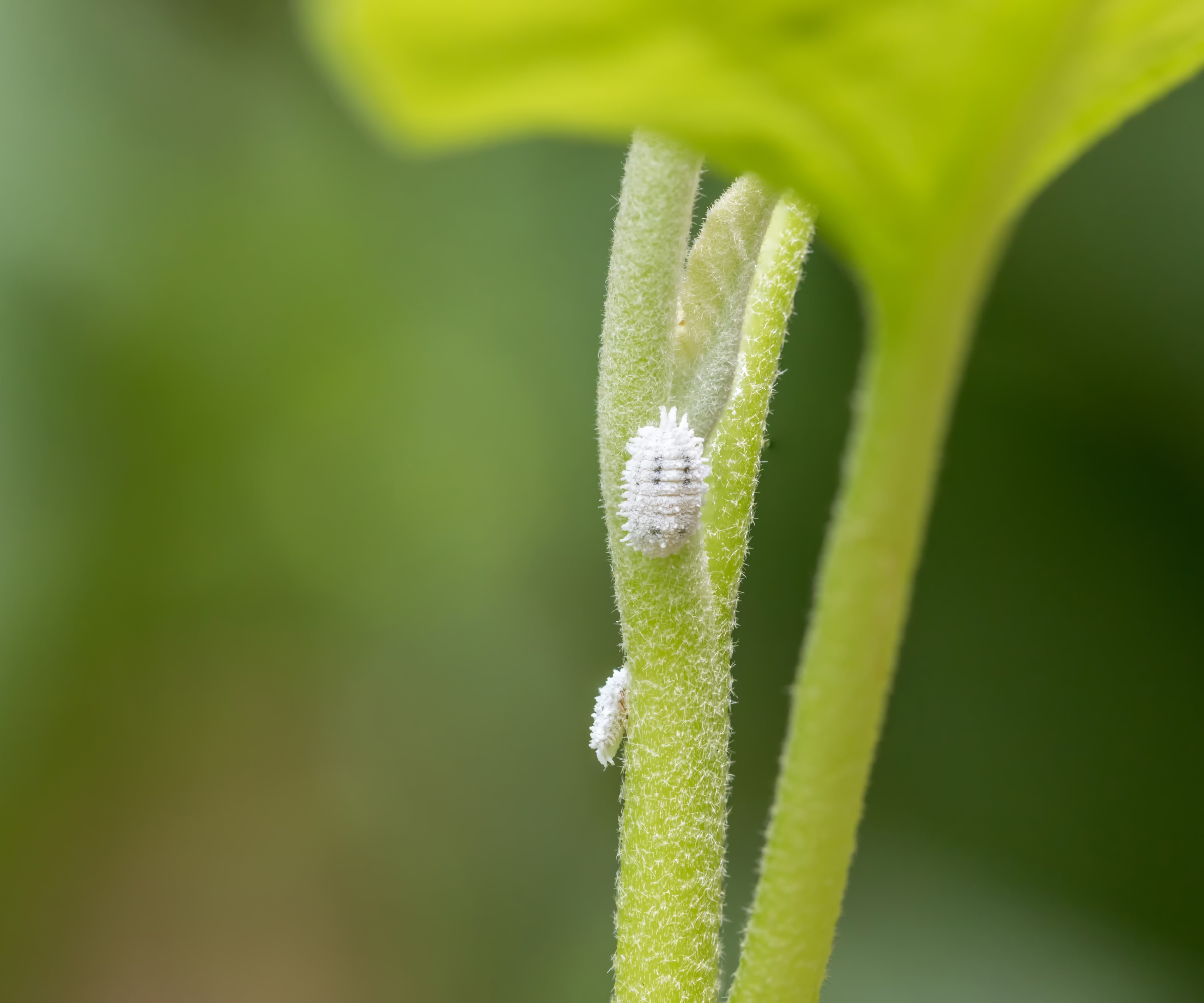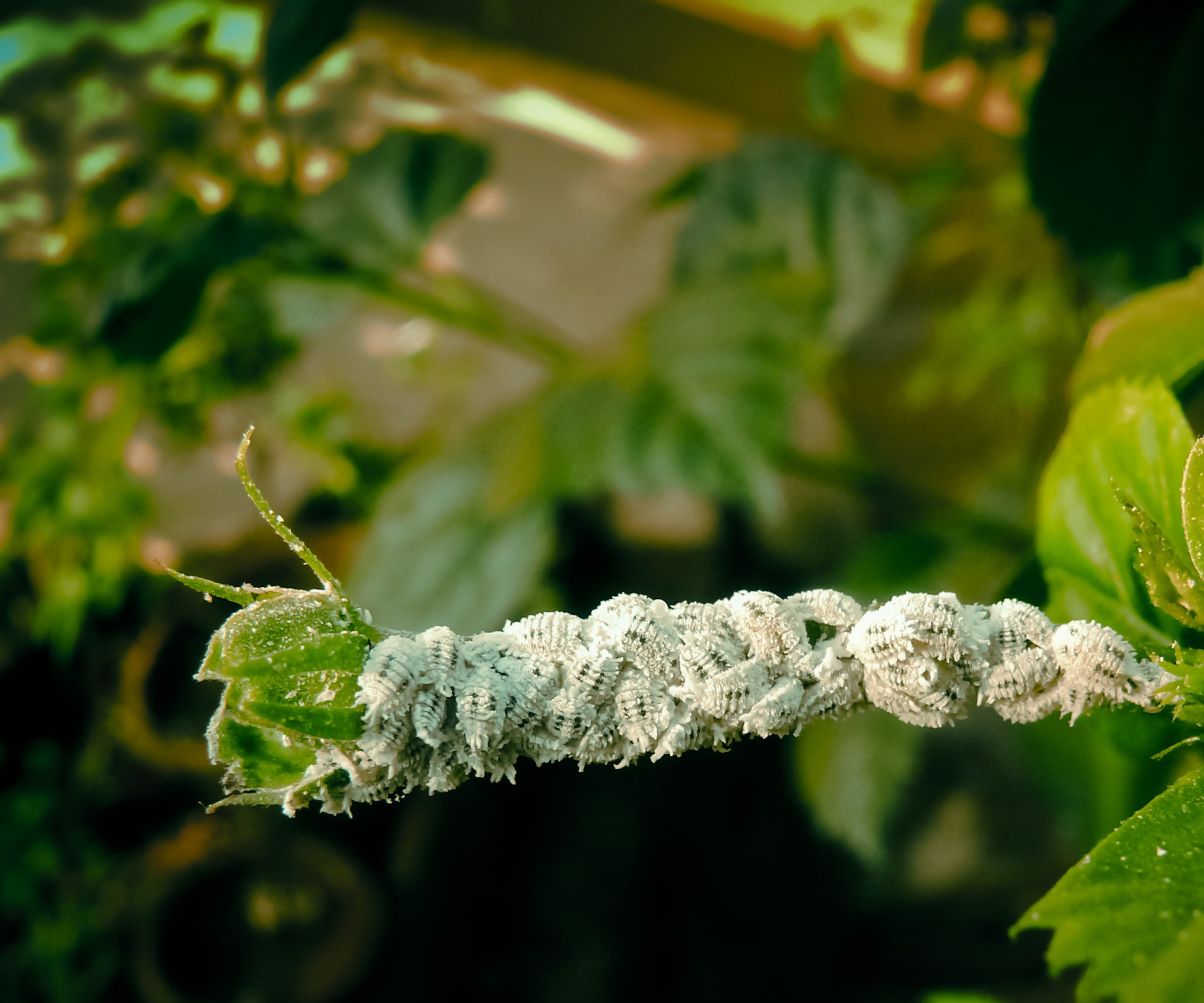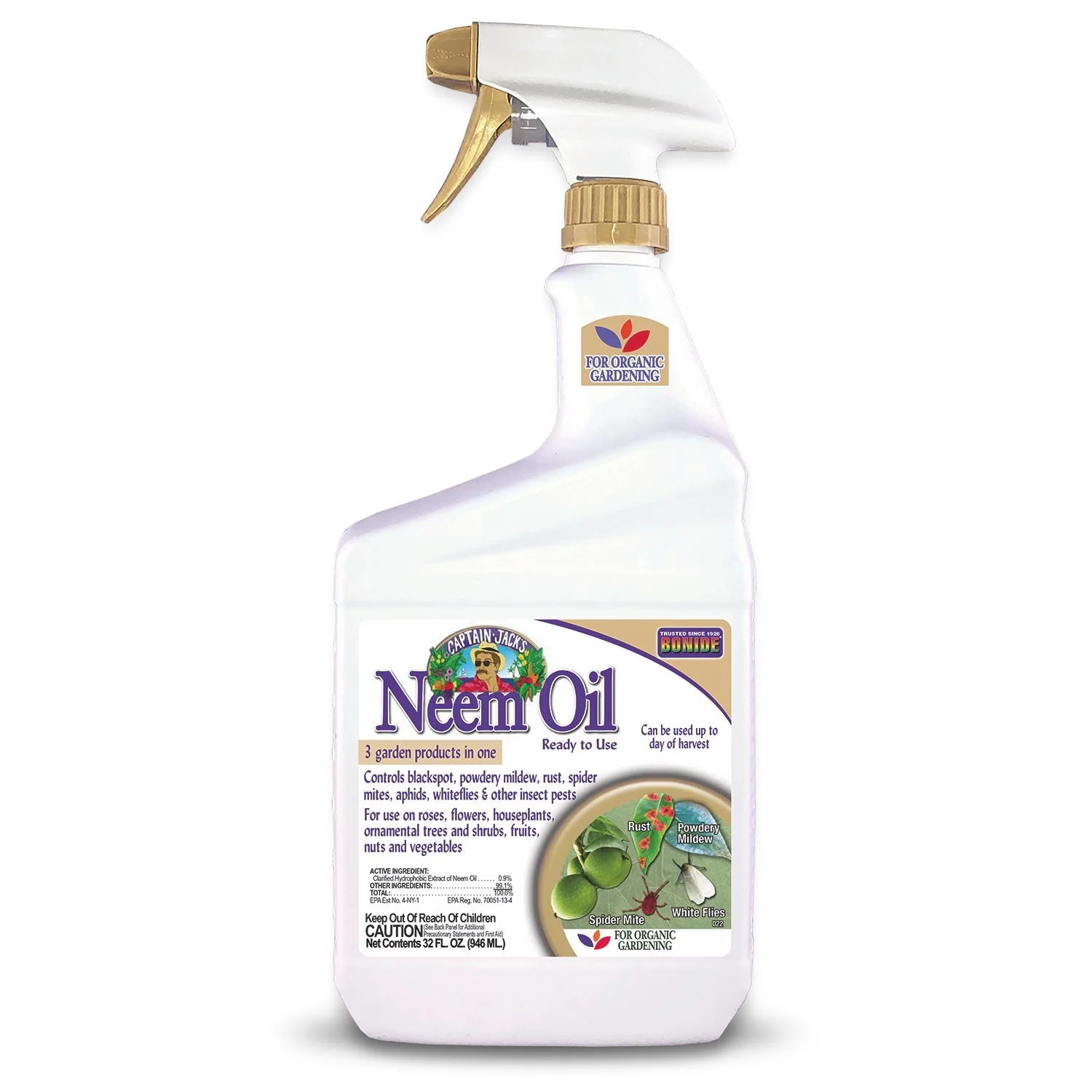Best ways to combat mealybugs in your yard – expert advice for identifying and killing mealybugs outdoors
Mealybugs are a troublesome pest that will cause damage to your prized plants if left untreated


Pest control is an unglamorous but inevitable part of garden maintenance. Every spring and summer, gardeners battle with pests that seek to feed on the foliage and flowers of indoor and outdoor plants.
Mealybugs are one such pest that can cause irreparable damage to outdoor plants. Much like aphids or spider mites, mealybugs can quickly take over your plot. So, if you are considering backyard ideas or flower bed ideas this year, remember to factor pest control into your planning.
Identifying and combating pest infestations is important, and the sooner you spot and deal with pest problems, for example, scale bugs, the better your chances of success. Here, we asked pest control experts to impart some words of wisdom to deal with mealybugs outdoors.

Best ways to combat mealybugs
Mealybugs are common garden pests that feast on lush new plant growth. In a short amount of time, mealybug infestations can decimate perennials and annuals, so an effective and timely treatment to combat mealybugs is important.
While mealybugs are often considered pests that attack indoor and greenhouse plants, they can thrive outdoors in warm weather and are considered one of the destructive dahlia pests that gardeners battle. The first step to dealing with mealybugs is knowing how to spot them.
How to identify a mealybug infestation

'Knowing how to spot mealybugs is not too difficult,' says Reese Robbins, garden expert and creator of Just Pure Gardening. 'Helpfully, mealybugs have particular characteristics that are easy to discern.'
Mealybugs are small pests that typically live in groups or colonies and adult bugs will appear white, which is easy to spot against dark green foliage.
Design expertise in your inbox – from inspiring decorating ideas and beautiful celebrity homes to practical gardening advice and shopping round-ups.
When mealybugs have moved in, gardeners might begin to notice a white cotton-like substance that suddenly appears on greenhouse plants. 'Mealybugs produce a white substance for protection,' Reese says, 'and helpfully for gardeners, it is easy to spot.'
Succulents, citrus trees, and orchids are all attractive meals to mealybugs, but they can also infest fruiting crops such as tomatoes and cucumbers when planted in the greenhouse. It is best to keep a watchful eye on these crops during the warmer months.
'Mealybugs often gather in these clusters, especially along the stems and leaf nodes. They have soft, oval-shaped bodies that are usually white or light gray, while the young mealybugs, or nymphs, can appear translucent,' Reese continues.
While your best bet is to inspect for white substances or white bugs, in severe infestations, mealybugs can excrete a sticky substance known as honeydew. 'This sugary liquid can accumulate on the leaf surface and attract other insects like ants. Over time, honeydew can also give rise to sooty mold, a black fungal growth that further damages the plant,' Reese adds. If you begin to notice a sticky residue on leaves, it is best to do some investigating.

Reese L. Robbins is the founder of Just Pure Gardening, a site full of fruit and vegetable growing guides, garden ideas, and garden product reviews.
How to combat mealybugs

'One way to combat mealybugs is by planting native trees, shrubs and perennials,' Reese says. 'Doing so will encourage natural predators to your backyard, including ladybugs, birds and other insects.'
Indeed, planting some of the best native dogwood trees or native trees such as the pawpaw tree, can help to encourage wildlife in your backyard. For those, seeking natural methods to combat mealybugs, considering wildlife garden ideas is recommended.
If, however, your mealybug infestation is concerning, fear not, there are simple steps you can take that will take effect quickly.
Reese recommends two solutions that are simple but effective. Firstly, using something like this spray bottle, available from Walmart, create a water and dish soap solution by combining a few teaspoons of soap with water. 'Simply shake the bottle, and spray the affected areas of the plant,' Reese says. 'It is best to repeat this spraying once every few days, wiping away dead mealybugs each time.'
The second option is using neem oil, which is a natural, organic product. 'Neem oil is a very effective organic solution when dealing with mealybugs,' Reese says. Ready-made neem oil solutions, available from Walmart, will quickly get to work, disrupting and dehydrating the bugs. Always follow the instructions on the packaging, spraying as often as is necessary until the infestation is controlled.

Neem oil is an all-purpose natural insecticide for organic gardening that is derived from the Neem seed. Safe to use on roses, flowers, vegetables, herbs, spices, houseplants, ornamental trees, turf and shrubs. It kills all stages of insects including eggs, larvae, and adults.
FAQs
What is the best organic solution for dealing with mealybugs?
Ready-made neem oil solutions are widely available from garden stores and online. Neem oil is produced using the seeds from the neem tree, and so is a natural pesticide. Neem oil is widely considered to be the most effective treatment for mealybug infestations. Always follow the guidance that can be read on the packaging, applying the neem solution as frequently as is recommended until your pest problem is under control.
Garden pests are a common problem that all gardeners battle with during the growing season. By identifying the pest and dealing with infestations quickly, gardeners can prevent severe damage to prized plants.
For more backyard pest control topics, consider our guide on the best way to kill ticks in your yard, or how to get rid of earwigs in your yard.

Thomas is a Content Editor within the Gardens Team at Homes and Gardens. He has worked as a professional gardener for both public spaces and private estates, specializing in productive gardening, growing food and flowers. Trained in Horticulture at the Garden Museum, he has written on gardening and garden history for various publications, including The English Garden, Gardens Illustrated, Hortus, The London Gardener and Bloom. He has co-authored a Lonely Planet travel book, The Tree Atlas, due out in 2024.